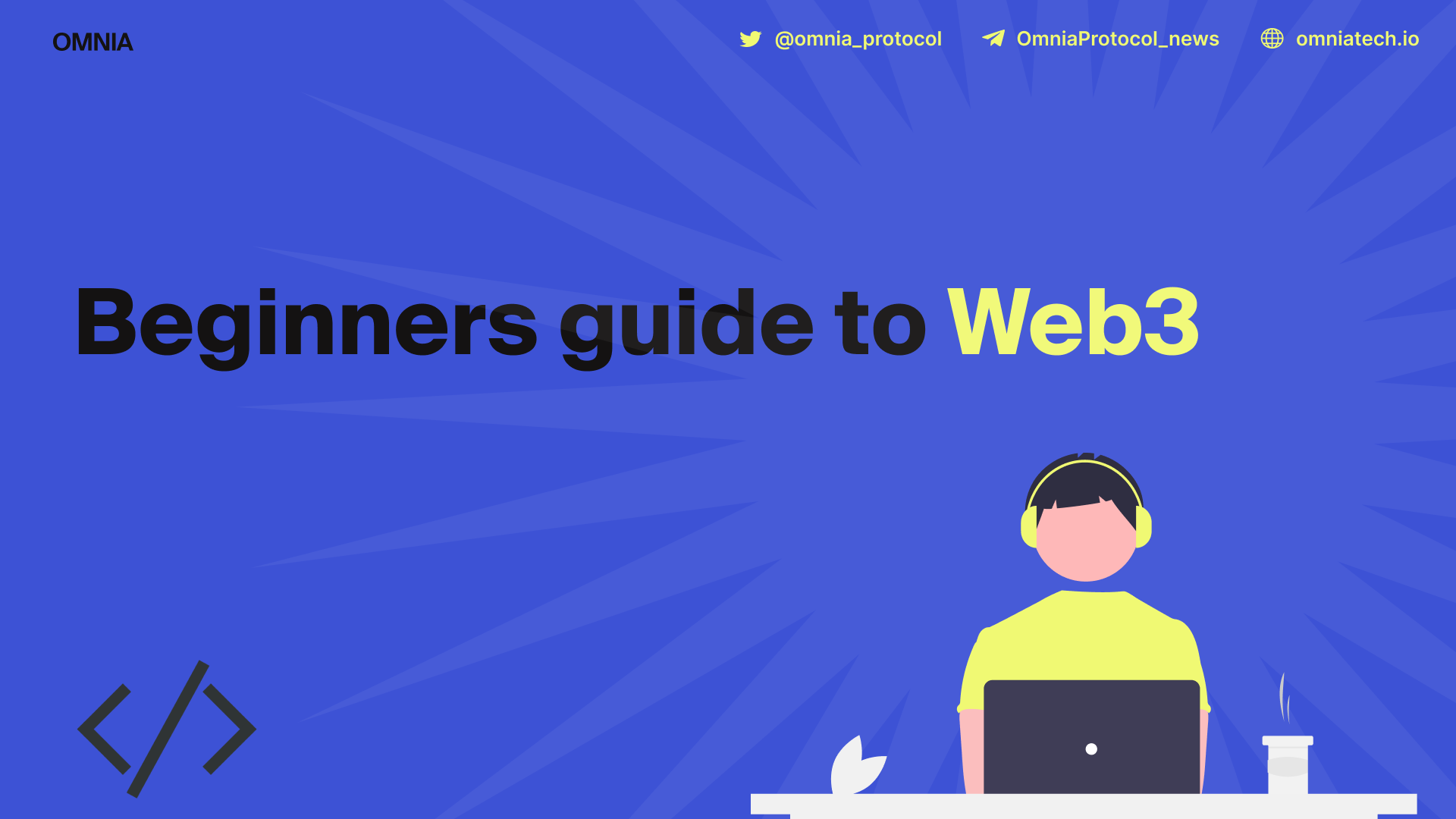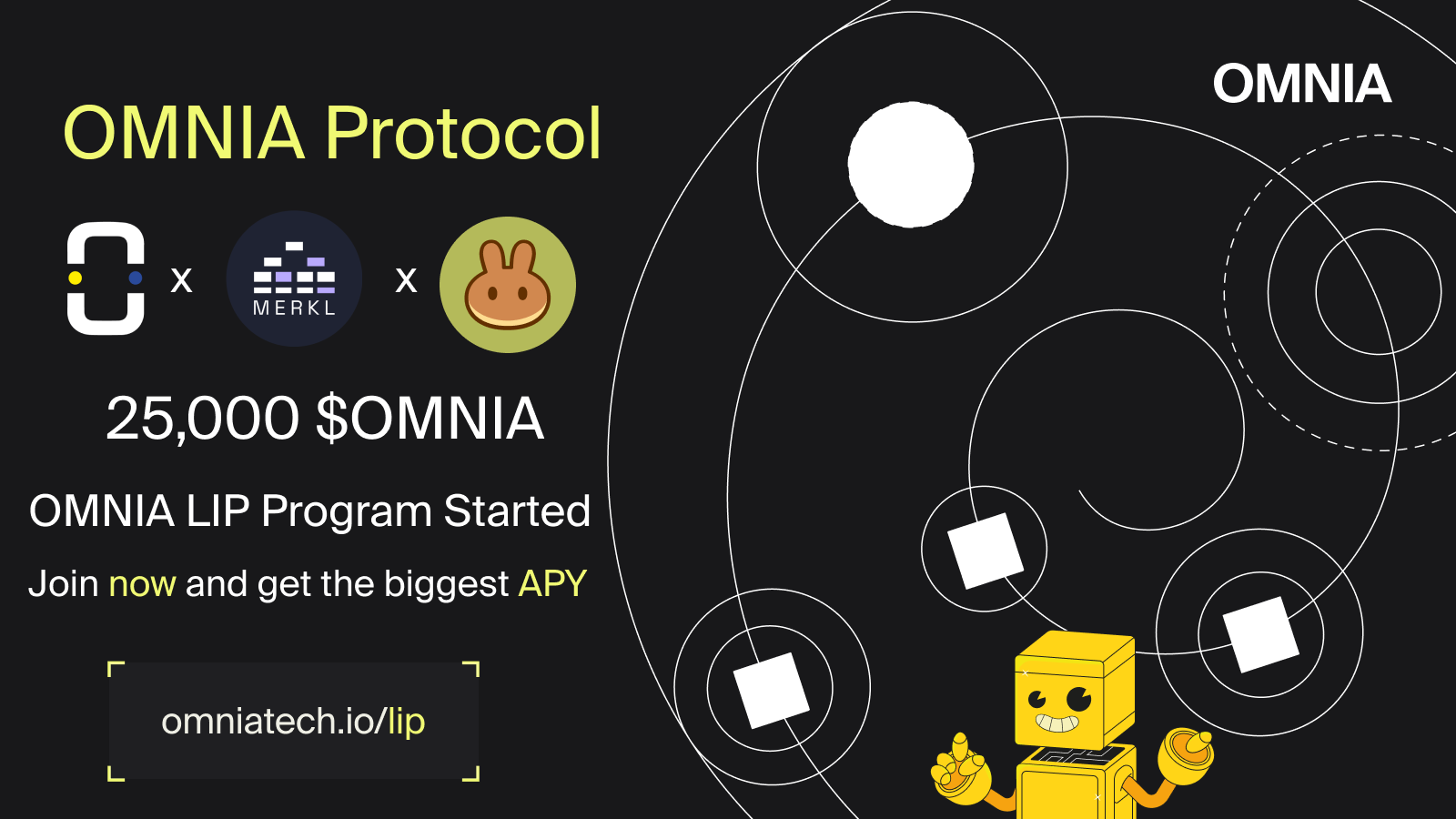
Beginners guide to Web3
Web3, DAOs, NFTs, and countless technical terms are confusing, and we get it. We were exactly in the same position when we first encountered them. But with time, the complexity reduces as the experience grows due to interacting with the various digital assets, blockchain networks, and decentralized applications.
Luckily, OMNIA’s team is here to assist in simplifying some of the complex terms that might scare someone willing to take a leap of faith into the industry.
What is Web3?
The first term that we will assist in defining is Web3. The internet has been full of headlines talking about Web3 and how it is the new version of the internet. But for us to describe Web3, it is worth first understanding Web1 and Web2, which preceded Web3.
Web1 (the 1980s to 2000) is the first version of the internet that was characterized by static web pages custom built by companies to target a specific audience.
Web2 (2000 to 2010) is the version of the internet more familiar to us today. It is what we interact with daily. It is dominated by large corporations such as Facebook, Microsoft, Google, and Amazon that provide various online services.
Web3 is an umbrella term for different ideas pointing to removing the big middle-men on the internet. They also refer to decentralized apps (DApps) that run on the blockchain.
However, it differs from the previous versions of the internet because anyone can participate and use Web3 without the fear of getting their personal information monetized by giant companies.
What is a DApp?
Dapp is short for decentralized applications. DApps are similar to the regular applications on our phones and computers in terms of look and functions. The main difference is that Dapps run on peer-to-peer networks, also known as blockchains.
Dapps are also as diverse as traditional applications. They are designed to facilitate end-user access to social media, games, entertainment, productivity tools, and more.
Popular Dapps include games such as Axie Infinity and decentralized trading platforms such as Uniswap and Sushiswap.
What are DAOs?
DAOs, or Decentralized Autonomous Organizations, are more or less corporations on the blockchain that are collectively owned and managed by their members.
A DAO can be thought of as a very democratic way of running a company. Rather than having a CEO and board of directors call the shots, each ‘shareholder’ or company member can propose an idea that is later voted upon by the entire community.
Consequently, no single individual or entity has the power to make individual decisions that affect the entire corporation. Democracy and fairness are further guaranteed using the software code used to design the DAO. This software code is in the form of automatic smart contracts, which will be explained below.
What is Blockchain?
In simple words, Blockchain is a system of recording information that makes it difficult or impossible to change, hack, or cheat the system.
Essentially, a blockchain is a digital ledger (i.e., record, history) of duplicated transactions distributed across the entire network of computer systems on the blockchain. Each block in the chain contains many transactions, and every time a new transaction occurs on the blockchain, a record of that transaction is added to every participant’s ledger.
How is it impossible to cheat the blockchain system? Blockchains are immutable, meaning that the data entered cannot be changed. For Bitcoin, this means transactions are permanently recorded and viewable to anyone. Bitcoin’s blockchain is decentralized, so there is no one central figure. Instead, all users retain control of the network.
What are Cryptocurrencies?
You must have heard and are familiar with Bitcoin and Ethereum. Most crypto traders and the general public know these are the most popular cryptocurrencies. But what is a cryptocurrency, and why are people putting their money into seemingly some sort of “magic internet money”?
A cryptocurrency is a form of digital asset based on a network that is distributed across a large number of computers. This decentralized structure allows them to exist outside the control of governments and central authorities.
Pros vs. Cons
The advantages of cryptocurrencies include cheaper and faster money transfers. In addition, decentralized systems promise some sort of immunity from malicious attacks.
On the other hand, the downside of cryptocurrencies includes price fluctuations making them speculative assets rather than stable ones, high energy consumption concerning environmental issues, and potential use in criminal activities.
The decentralized aspect is also questionable, and we have gone through the length to explain why most of the blockchain infrastructure is still centralized.
What are Smart Contracts?
Smart contracts are simply programs stored on a blockchain that run when predetermined conditions are met, just like any other program. They are typically used to automate an agreement’s execution so that all participants will know the outcome without a third party’s involvement or time loss.
However, what a smart contract program does is up to the creator. It can be a sophisticated applet that allows users to execute various commands or a simple math computation. So, as we always say, do your own research and figure out what the smart contract provides to a project.
What are Non-fungible Tokens (NFTs)?
In a nutshell, NFTs represent digital ownership — the virtual equivalent of owning physical properties.
Non-fungible tokens or NFTs are cryptographic assets on a blockchain with unique identification codes and metadata that distinguish them from each other. They can represent real-world items like artwork and real estate. But they are also popular in video games.
For example, when it comes to digital art, a person who buys an NFT art is buying the only original version of that piece minted by the artist.
“Tokenizing” or “Minting” these real-world tangible assets allow them to be bought, sold, and traded more efficiently while reducing the possibility of fraud. NFTs can also represent individuals’ identities, property rights, and more.
For Developers interested in Web3
We have heard stories about Silicon Valley talented minds leaving tech companies to work on blockchain projects, and yes, that is indeed happening. Furthermore, getting into Web3 should not be too hard if you already have a computer science background. If not, it is better to start building your foundation by learning computer programming.
This article here is an excellent read if you are ready to dive deeply into the Web3 development space.
What is OMNIA’s role in Web3?
Omnia Protocol is a decentralized infrastructure protocol for securely accessing the blockchain so that no single point of failure will ever disrupt blockchain applications or wallets integrating with it.
Omnia’s solution is truly decentralized and requires zero technical knowledge. Therefore, all users can set up their nodes in little time and effort. Learn more about the technological marvel behind Omnia by following our Blog or reading our whitepaper.


